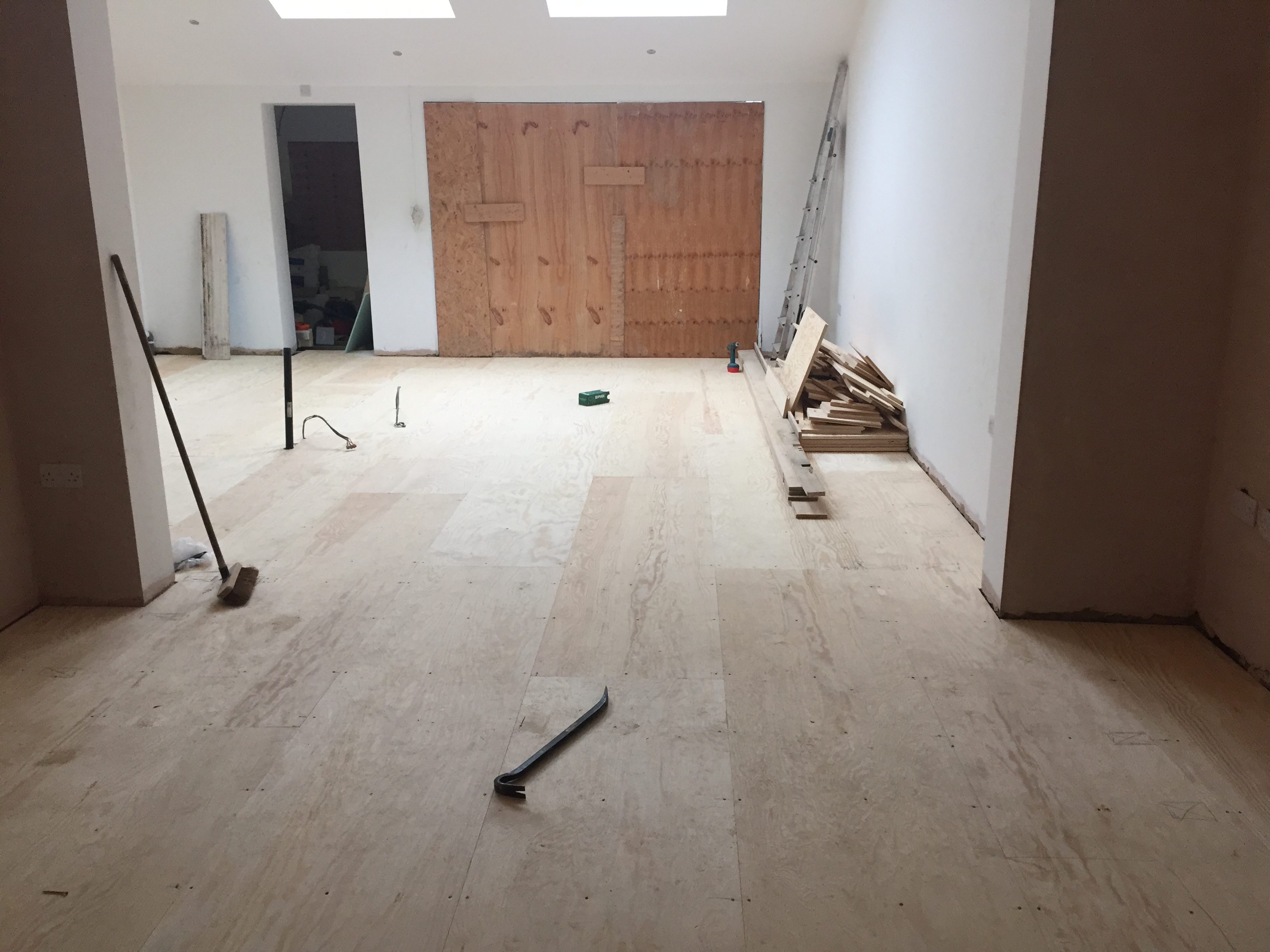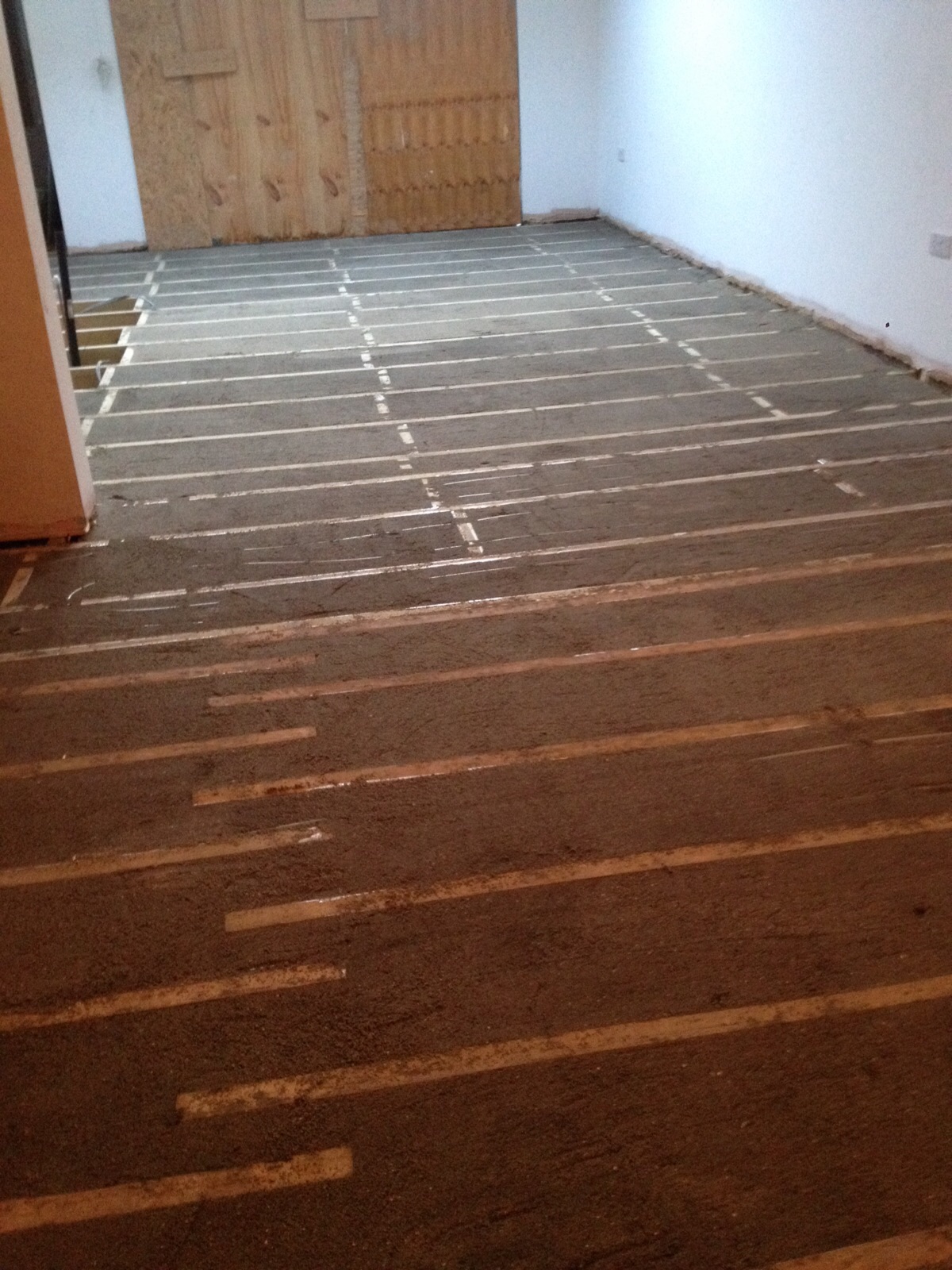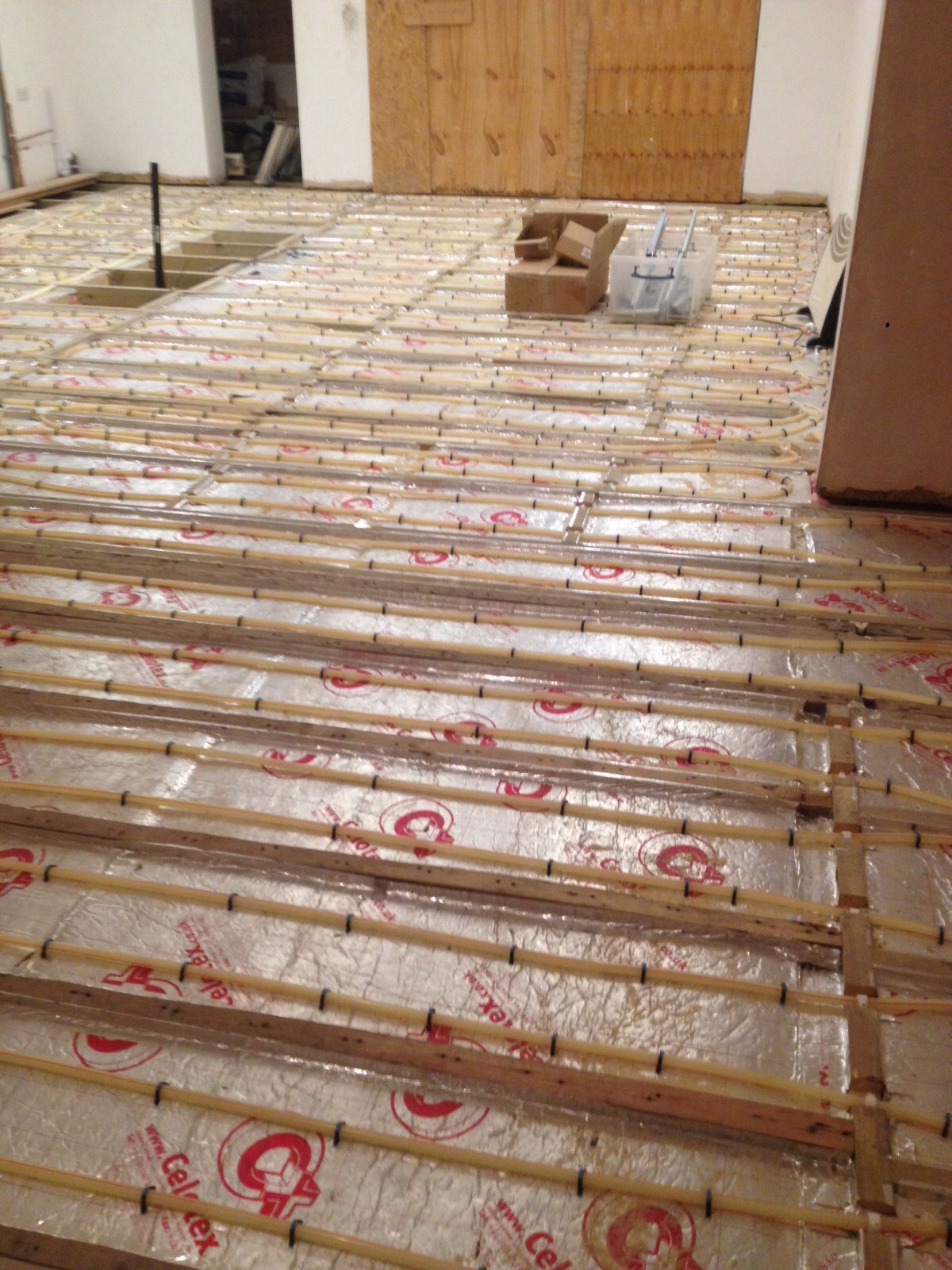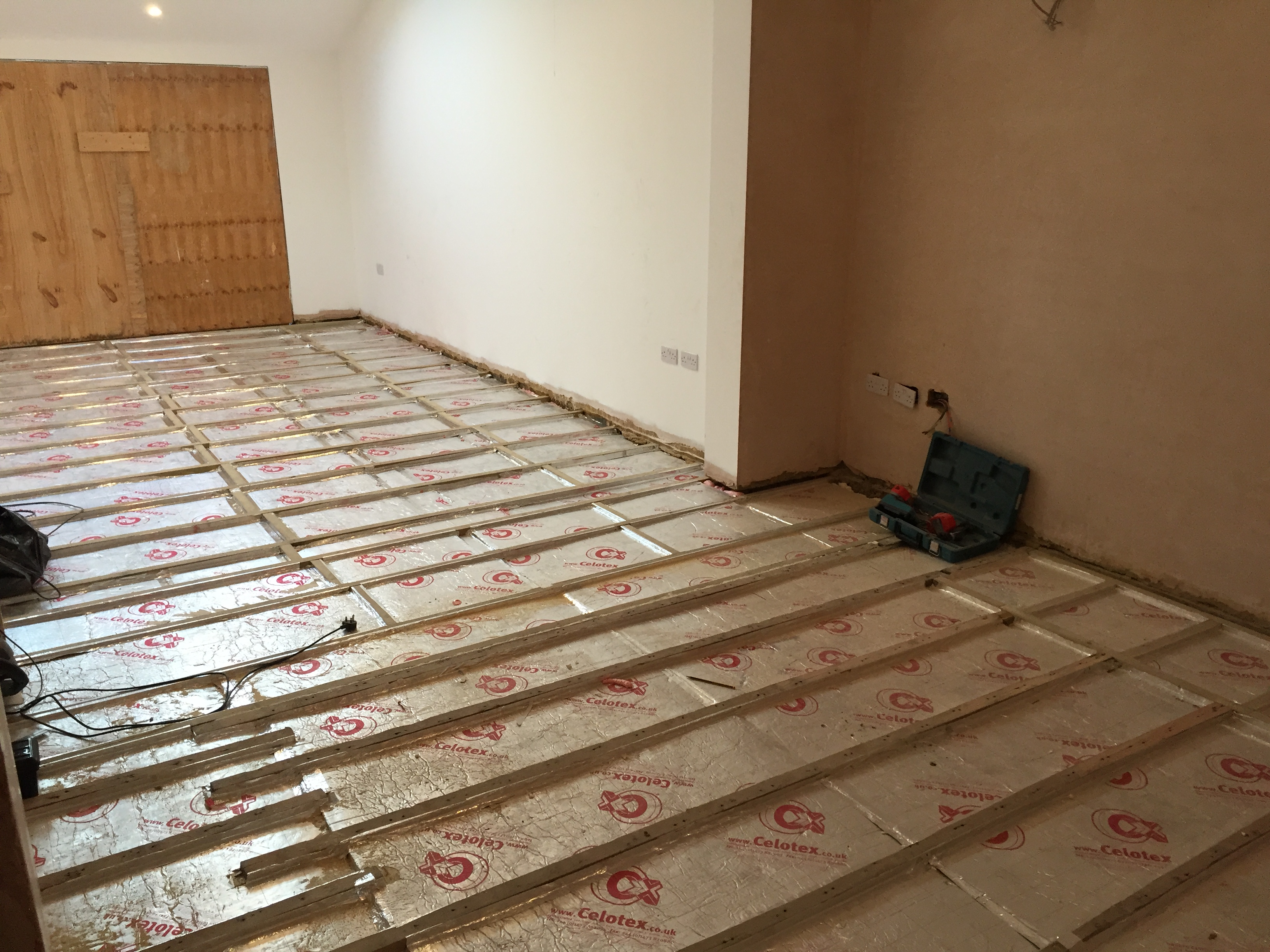Underfloor Heating
SYSTEM BASICS
The majority of modern UFH systems are warm water systems, which integrate high tech plastic pipe either within or just below the floor.
Normally, water at a temperature of 47-62°C is circulated through this pipe and this warms the floor to a surface temperature of 25-28°C, about the same temperature as the palm of your hand.
The heat generated by radiators is transferred from a small surface area far hotter than the space it is heating. By comparison, UFH transfers heat from a very large surface area, which is only slightly warmer than the room.
Modern UFH systems are economical to run, virtually maintenance free and utilise effective controls. They provide the most comfortable all round warmth of any heating system.
In concrete floors, it is usual to set out the heating pipe or cable on top of insulation before the screed covers the pipe and completes the floor construction.
Hot water is pumped from the boiler to the manifold Pump Pack, where the water is mixed to approximately 50°C via the unique mixing valve before being pumped into the floor.
The special underfloor pipe is connected to the manifold from where it runs out to the heating circuits.
The pipes are embedded into the solid screeded floor, which can be covered with almost any finish.
The system is controlled by one or more thermostats, which signal the Pump Pack when heat is required.
HOW DOES UNDERFLOOR HEATING WORK?
Underfloor Heating is not new, the principles go back to Roman times. In Europe it is the system of choice and in some countries accounts for 70% of new heating installations.
A radiator system transfers energy into the room largely by convection. This convection results in the floor being the coolest part of the room and leaves a mass of warm air at ceiling level.
It also picks up fine dust from the floor and distributes it into the air and over the furnishings.
This can mean that much of the energy, which had been put into the room, is wasted and not in the area you want it to be.
A UFH system heats mainly by radiation. This is the most natural and comfortable form of heating – just like the sun.
Radiant energy emitted by the floor is partly reflected by each surface and partly absorbed. Where it is absorbed, that surface becomes a secondary emitter.
After a while, all surfaces become secondary emitters. Furnishings themselves radiate energy and the room becomes evenly and uniformly warmed. The energy reaches into every corner of the room – no cold spot, no hot ceilings and no cold feet.
When compared to other forms of heating, the overall effectiveness of a UFH heating system can be seen below.
The heat is concentrated where it is most needed for human comfort and energy efficiency.
FEATURES & BENEFITS
The wet underfloor heating system offers many benefits to the consumer. Some of these are shown below.
Comfort
The system uses radiant heat, which is the most comfortable form of heating.
Space
The system is unobtrusive and space saving which means that every square metre of floor and wall space can be fully utilised giving freedom of interior design.
Noise
Compared to radiator systems the UFH system is virtually silent running.
Health
Dust is minimised and reduces house dust mites. Reduced numbers of hot surfaces and sharp edges reduce the risk of burns or injury.
Economy
The system reduces energy consumption and the loss of heat from the building surface is reduced.
Control
The system is easy to control and the small temperature difference between the floor and the air means that the system is virtually self-regulating.
Environment
Underfloor heating is suitable for use with the most energy efficient and environmentally friendly heating systems including condensing boilers, solar power and heat pumps.
If you would like to find out more about underfloor heating from Plumbing Pumbers Ltd then please get in touch with a member of our expert team who will be on hand to give you any advice you may have.





